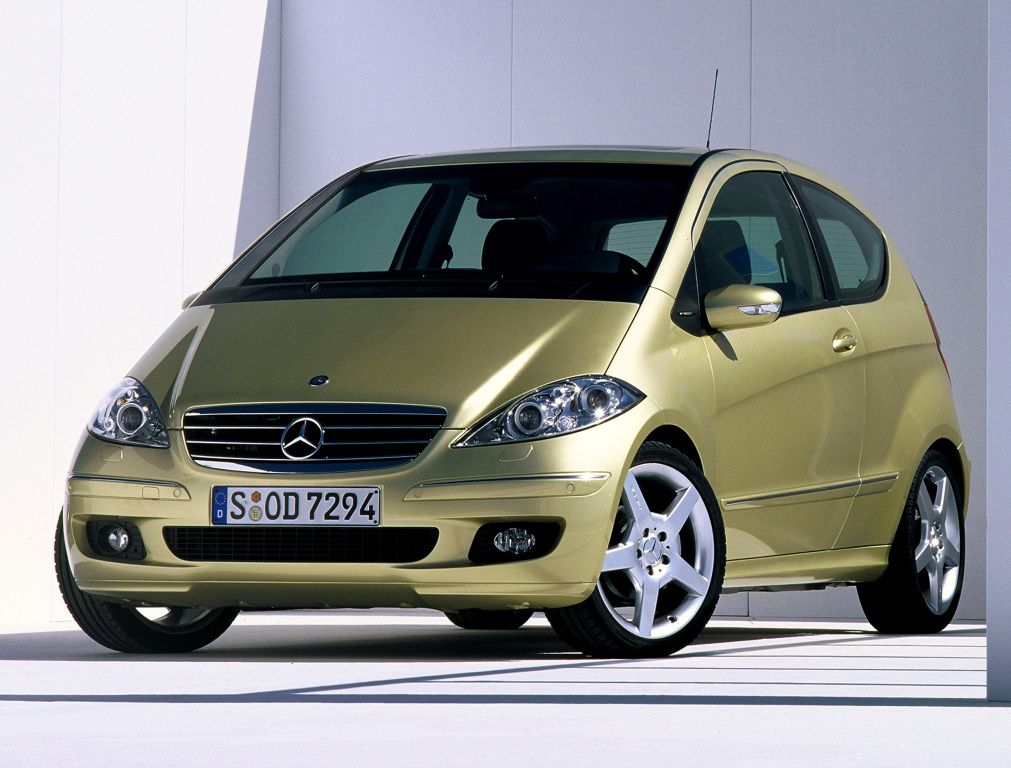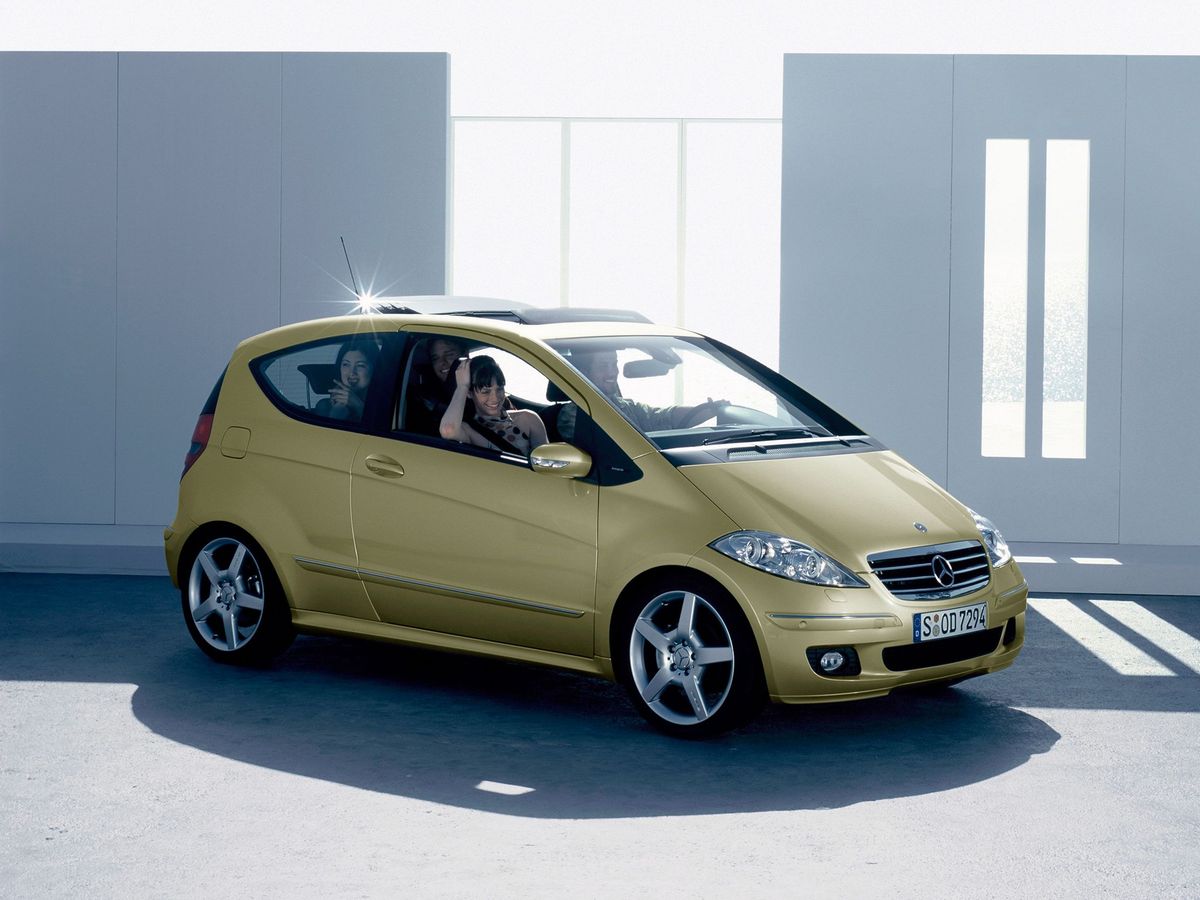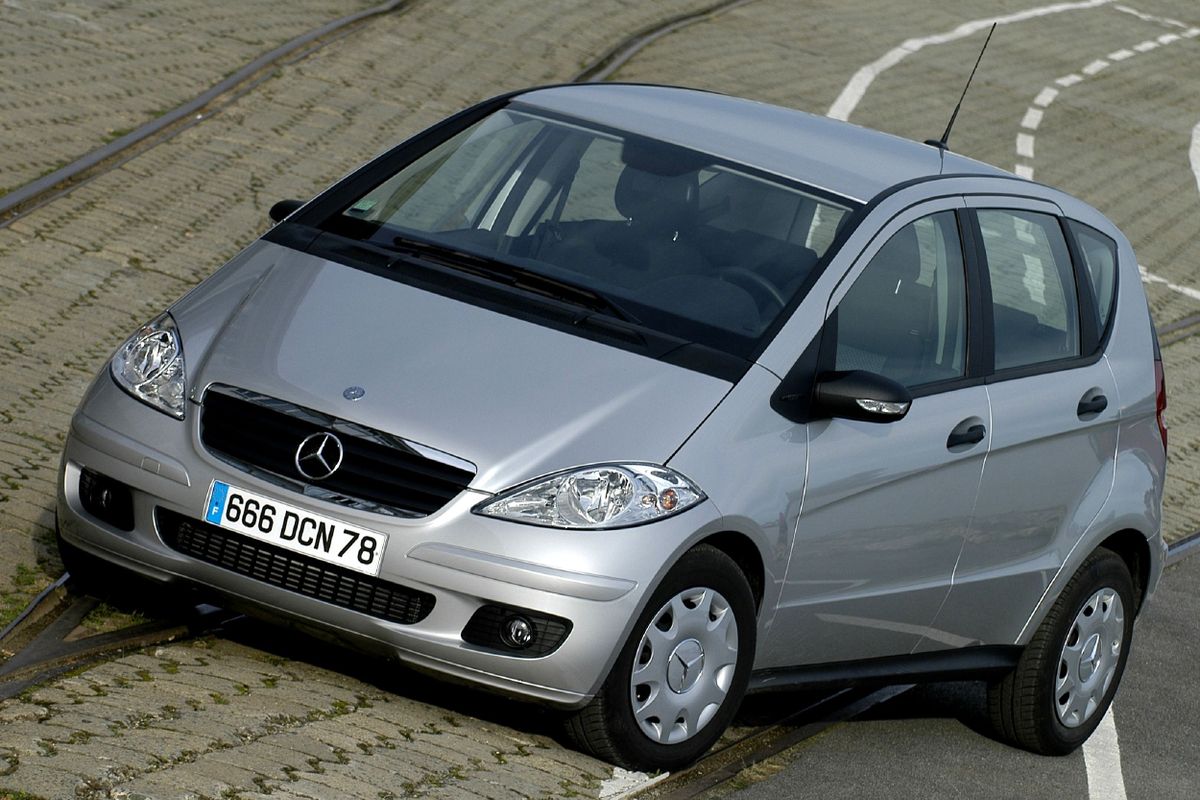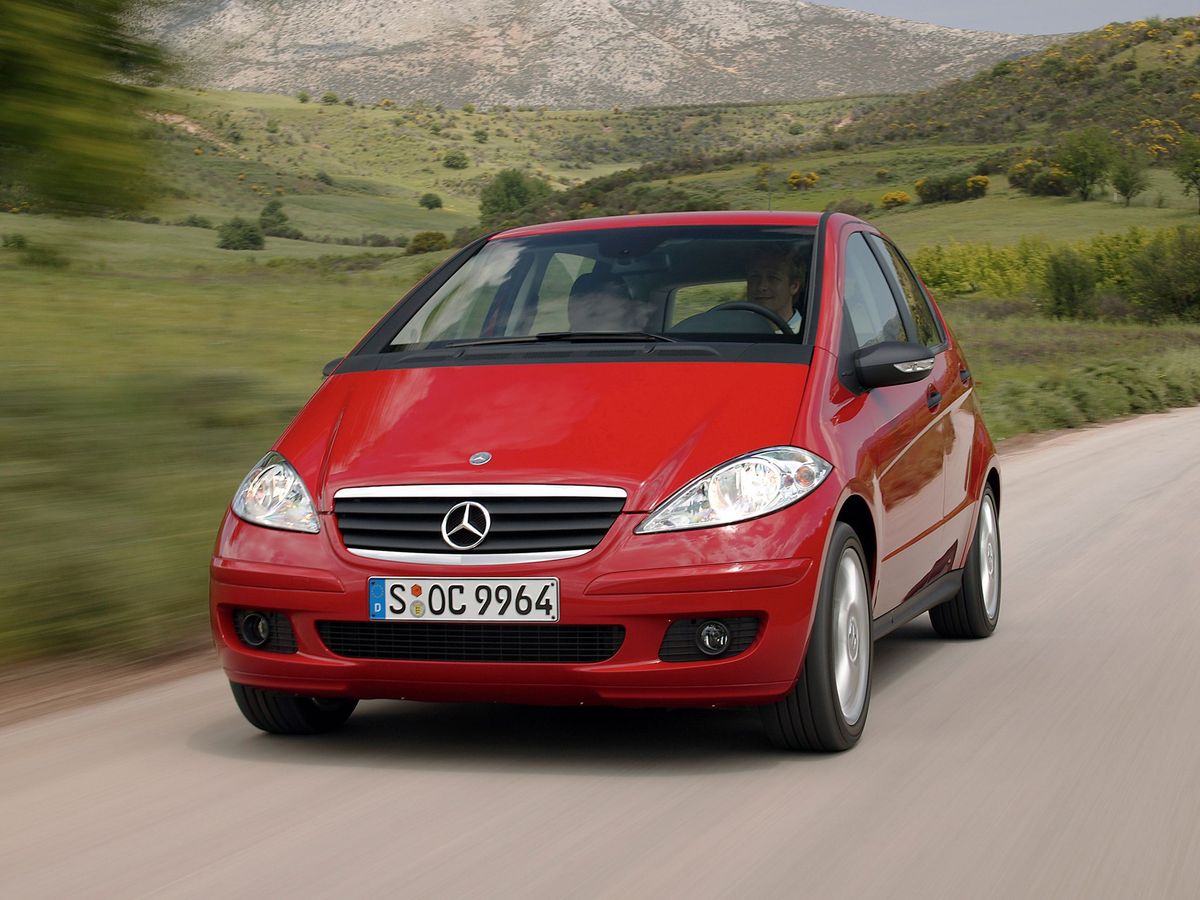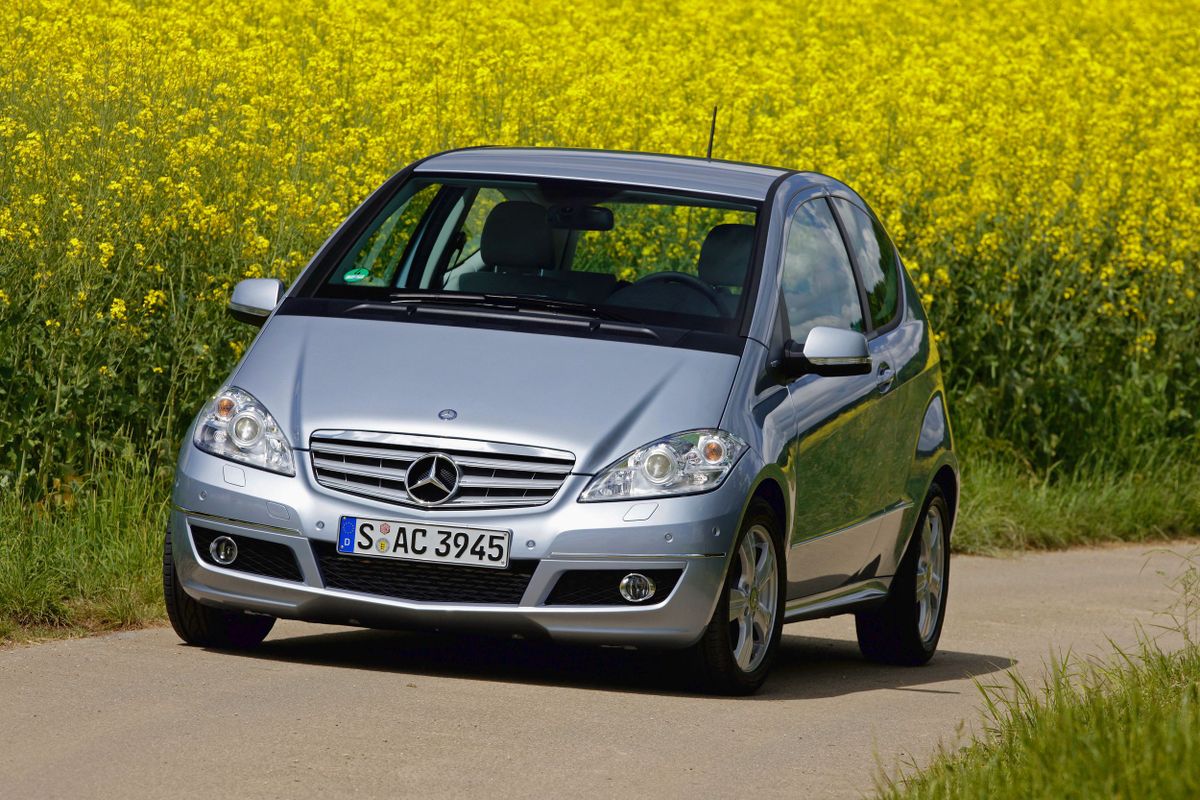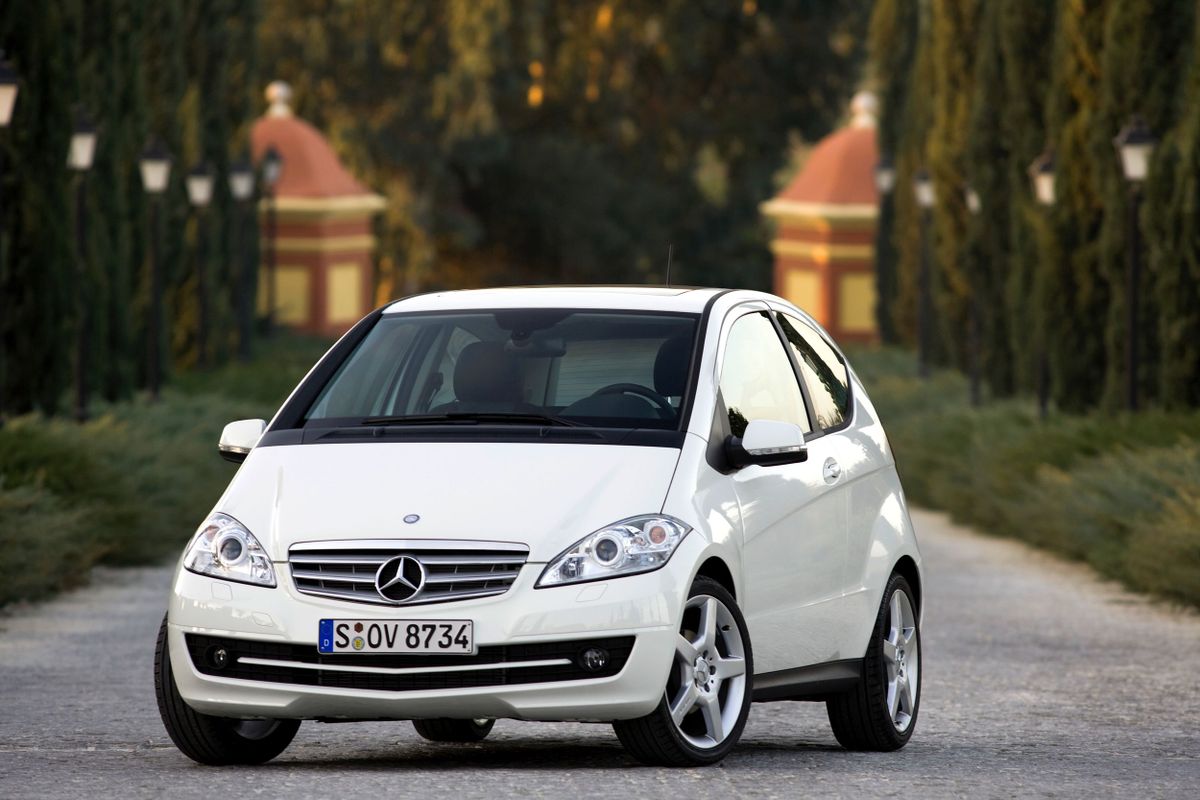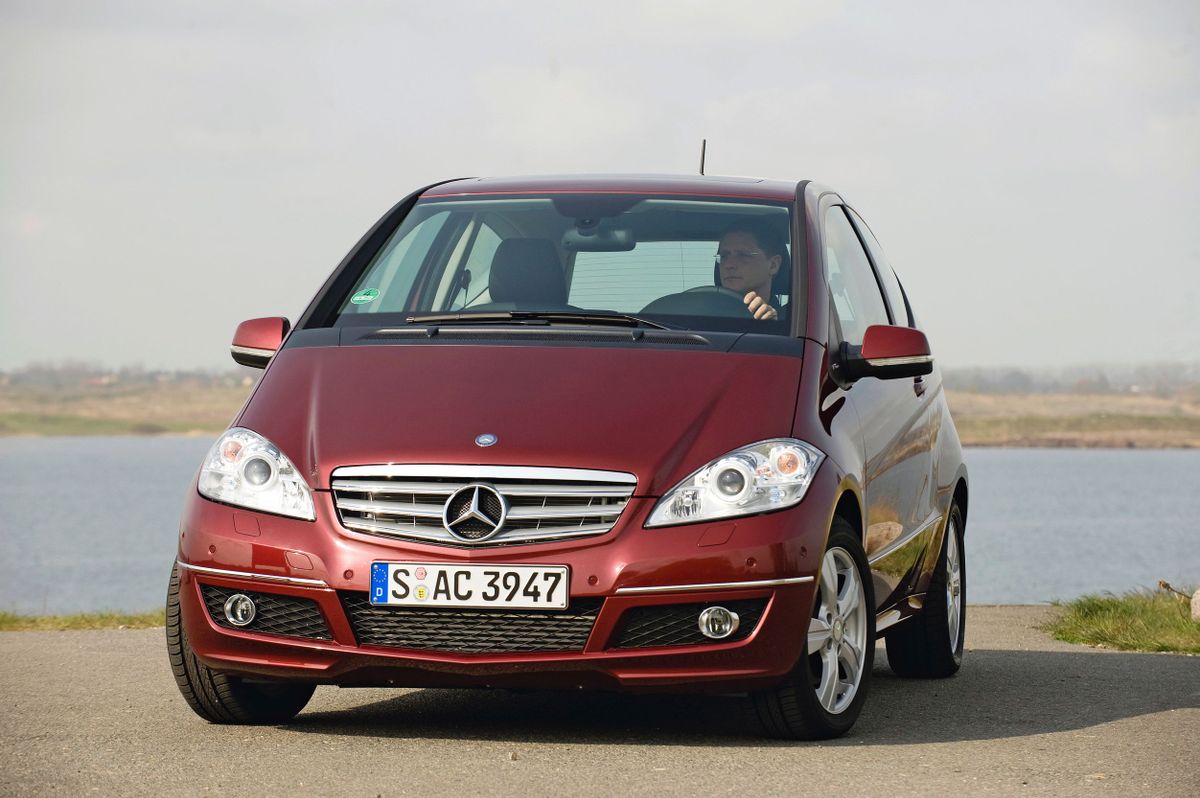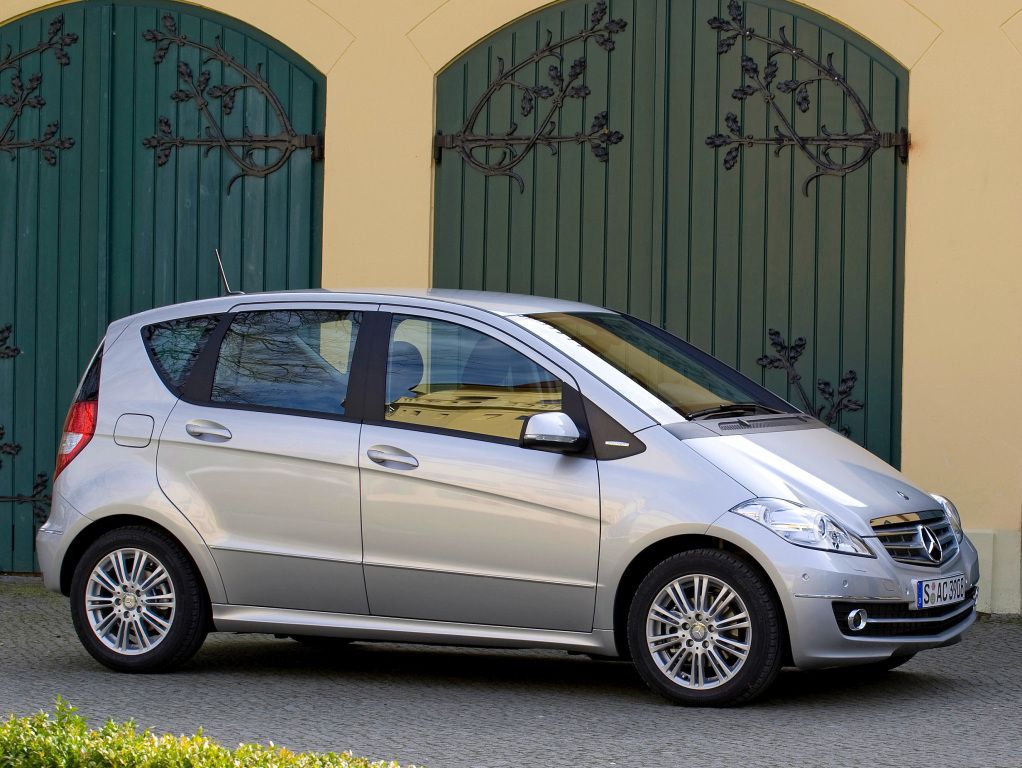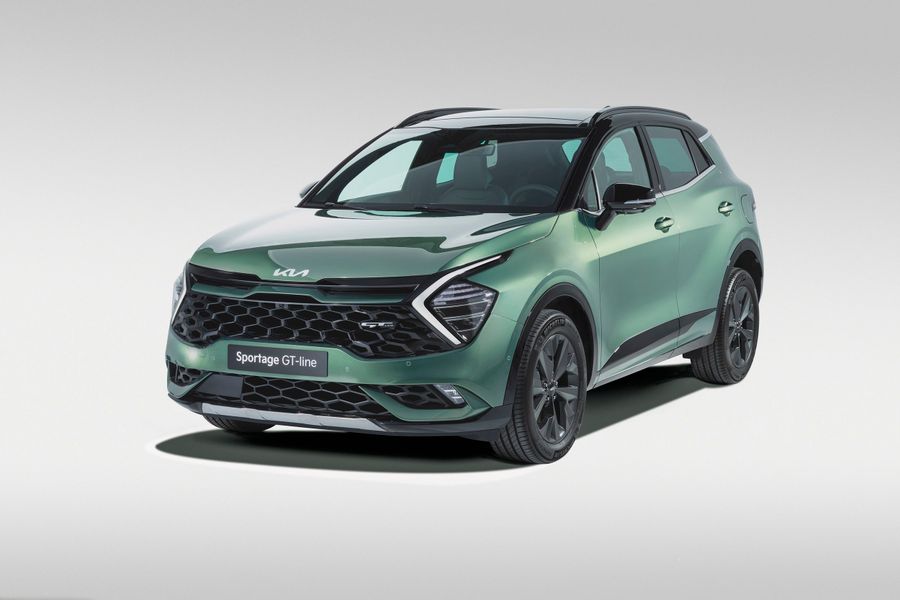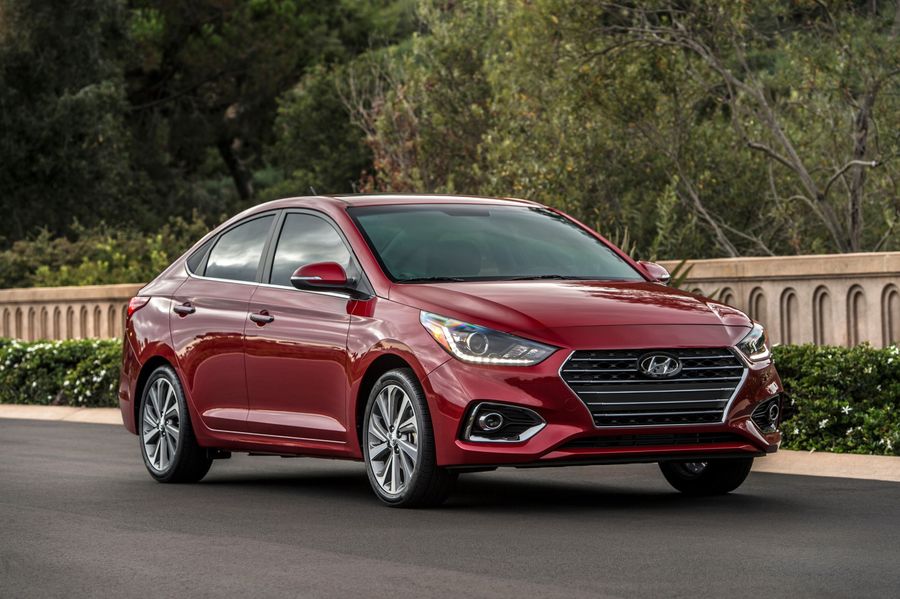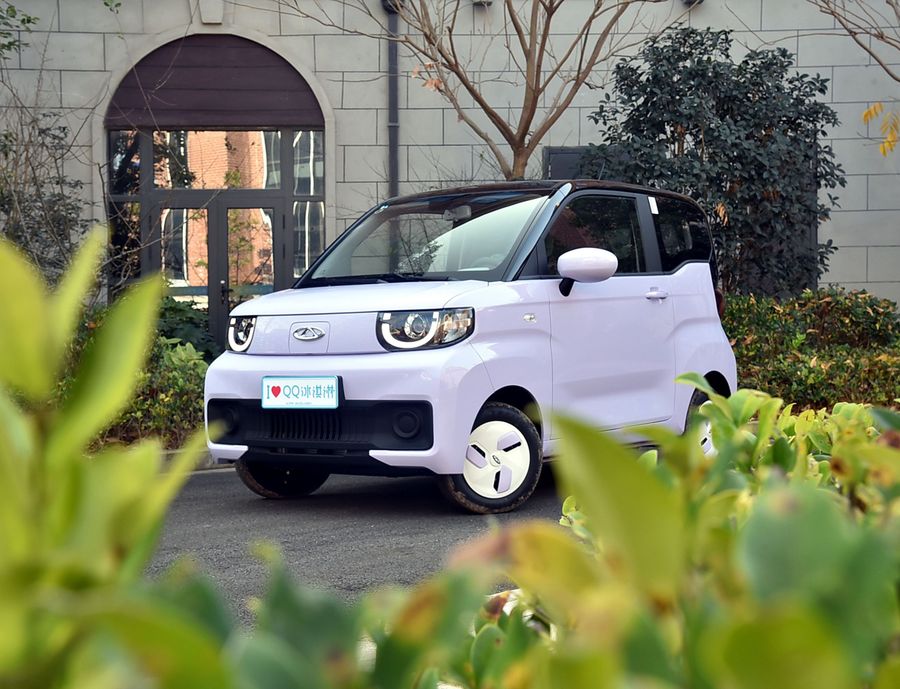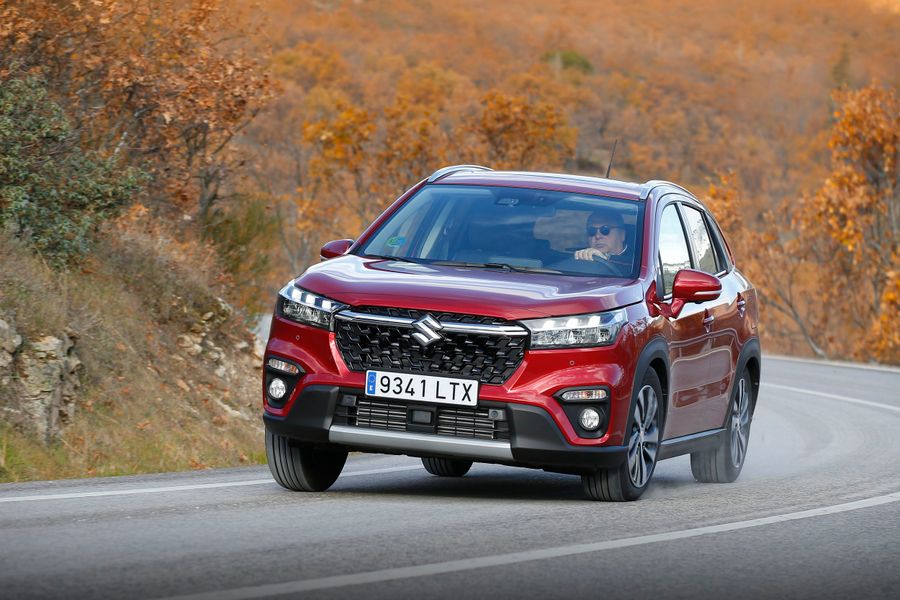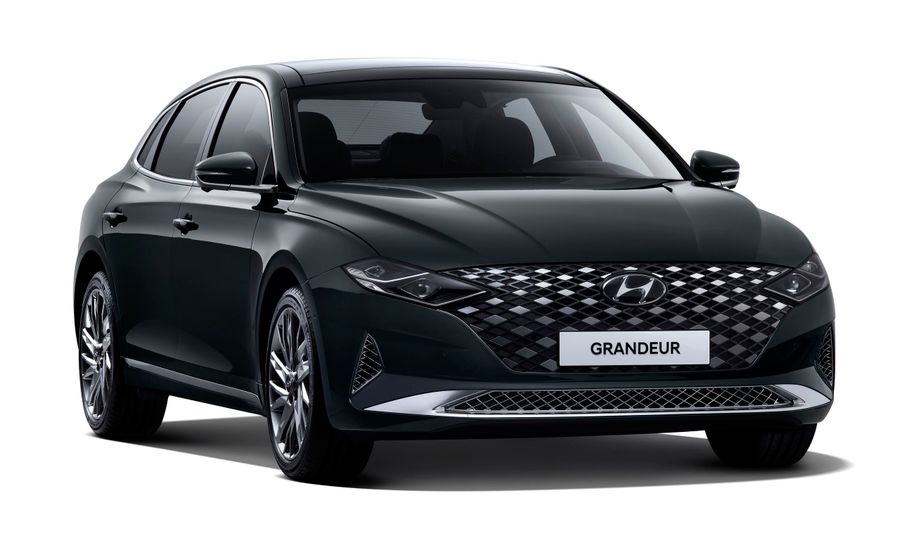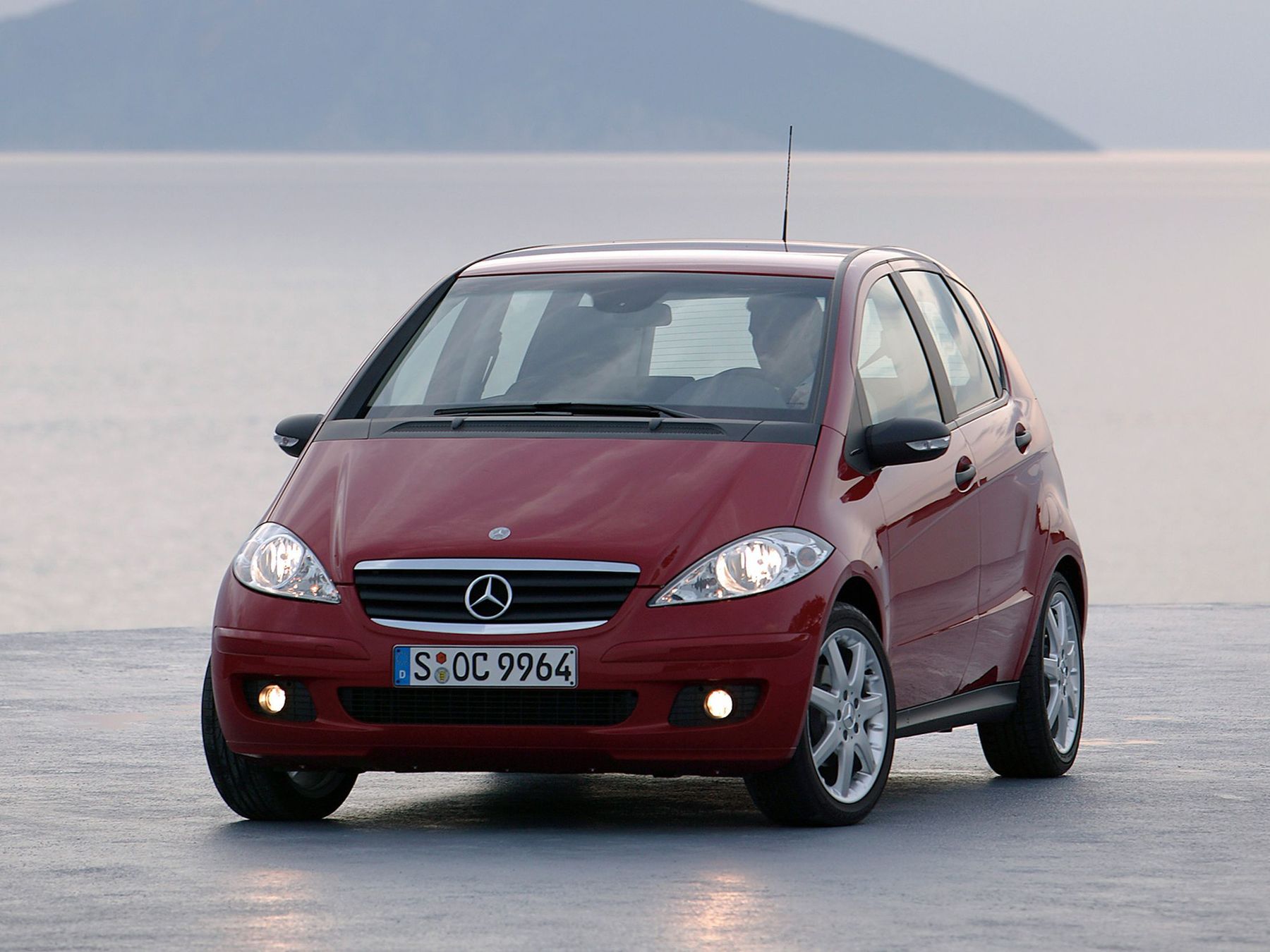
The same. But better
Just like its predecessors, the second generation of the Mercedes A-Class models was built in accordance with the sandwich concept, which implied installation of the engine and gearbox under the floor. This concept allowed making the interior more spacious, but still compact, and ensured the maximum level of frontal collision safety. The second generation vehicles were available with a wheelbase of 2,568 mm in two basic bodies: an all-purpose five-door W169 and a sporty three-door C 169. Buyers could choose between traditional second-generation trim levels, including Classic, Elegance and Avantgarde. These versions differed little from those provided for the first generation.
The new Mercedes A-Class was 232 mm longer than the previous model and 45 mm wider. And in terms of a wheelbase, the Mercedes 169 series was closer to the Mercedes 168 series long-wheelbase version. With the extended wheelbase, the interior turned out to be unprecedentedly spacious for a compact car. Thus, the distance between the seats reached 805 mm, whereas the legroom for the rear passengers increased by 30 mm. The interior ergonomics also underwent some improvements, acquiring a better seat position, improved viewing angles, more user-friendly telephone, optimized visibility of the central display, and a multifunctional steering wheel, which was used by models of higher series.
By popular request
Apart from the sandwich floor, the 169 series featured additional modified adaptive airbags, including side airbags, belt tensioners for the front and rear seats, and seat belt force limiters. Adhesive joints and additional body structural elements made the car more resistant to serious accidents.
When working on the 169 series, the manufacturer remained true to its good tradition of paying attention to the opinions of drivers and taking them into account when designing a car. This tradition was born back when the manufacturer worked on the first generation of the A-Class. Thus, to choose the materials of the steering elements, the drivers were asked to evaluate different materials in term of tactile sensations. All the requests from real users were taken into account.
Noise reduction was one of the key areas in the development of the second generation of the A-Class. To understand how to minimize noise, the developers used computers to analyze the vibration behavior of individual body elements. Although the virtual model showed that the prototype was quiet, there was something to strive for and as a result, for example, additional metal plates were installed at three points of the load-bearing floor and in the spare wheel compartment.
The developers were surprised by the success of the W169. They planned to sell 50 thousand cars during the first year of sales, but the result was achieved on the very first day of sale. And from 2004 to 2008, a total of about 1 million 169 series cars were sold.
The body of the new A-Class was fully galvanized for long-term corrosion protection. The doors, hood, tailgate and side members were also galvanized on both sides and painted with a zinc rich paint. The 169 series model was standardly equipped with an advanced air conditioning system with automatic temperature control and a humidity sensor. Climate control, which took into account temperature, angle of the sun, humidity and the presence of pollutants in the interior atmosphere, was optional.
Engine and chassis
Originally, the 169 series model could be equipped with three diesel engines:
- A 160 CDI (60 kW / 82 hp);
- A 180 CDI (80 kW / 109 hp);
- A 200 CDI (103 kW / 140 hp).
There were also three petrol engines to choose from:
- A 150 (70 kW / 95 hp);
- A 170 (85 kW / 115 hp);
- A 200 (100 kW / 136 hp).
On average, the petrol and diesel engines were 38% more powerful than those of the previous model. At the same time, models equipped with a petrol engine consumed 10% less fuel than the 168 series petrol versions.
The Mercedes 169 featured an innovative precision suspension parabolic rear axle, which played a large role in improving cornering stability and overall handling. Another chassis feature that came as standard was a new hydro-mechanical damping system that did not use sensors or sophisticated electronics, but it ensured comfortable traveling in all conditions.
As for the transmission, in addition to the manual and automatic transmissions, which worked well for the 168 series, the 169 series could be equipped with an optional AUTOTRONIC continuously variable automatic transmission, which allowed the engine to reach its maximum power faster than a conventional automatic transmission.
Modifications
In 2006, Mercedes-Benz introduced a special second generation A-Class model, the Polar Star. The model was distinguished by a long list of additional options that could be obtained significantly cheaper compared to when they were offered in the basic version. In the fall of 2007, Mercedes-Benz offered the Edition10 modification, a 169 series model with a modernized exterior and interior. The car featured 16-inch seven-twin-spoke alloy wheels, a sliding sunroof with panoramic blinds, and buyers could benefit from a good contract for all maintenance services at 10 euros per month.
Finally, the second generation was restyled in 2008. The changes primarily concerned modernization of the design of the headlights and taillights, radiator grille, bumpers and rear-view mirrors. The package included the Active (or more precisely, with minimal driver involvement) Park Assist.
Interesting facts
The launch of the Mercedes A-Class 169 series model range was accompanied by an advertising campaign with a slogan ‘Follow Your Own Star’, featuring Christina Aguilera. Giorgio Armani and Boris Becker also participated in the advertising campaign.
The developers were surprised by the success of the W169. They planned to sell 50 thousand cars during the first year of sales, but the result was achieved on the very first day of sale. And from 2004 to 2008, a total of about 1 million 169 series cars were sold.
In 2004, the second generation A-Class was ranked first in the ADAC ranking as the car with the lowest number of breakdowns in the compact and mid-range categories.
In the 2005 European NCAP (New Car Assessment Program) crash test, the 169 series model received the highest five star safety rating.
In October 2010, the manufacturer unveiled an electric 169, the E-CELL model, at the Paris Motor Show. The car could offer a drive range of 200 km and a maximum speed of 150 km/h.
In 2012, the last limited edition of the second generation A-Class was released for the Japanese market.


